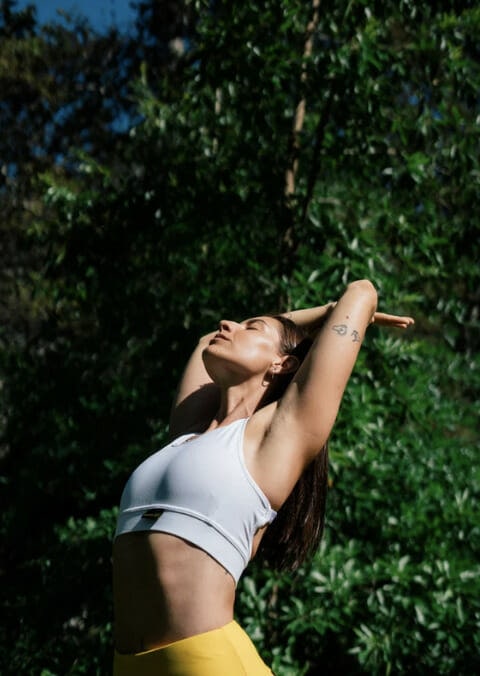We hear the term “wellness” constantly thrown around. I do pilates for my wellness, I meditate for my wellness, I journal for my wellness… It’s so common, yet not a lot of us actively acknowledge what it is and the benefits it has.
Wellness is the act of practising habits that are “healthy” to help your physical and mental health better connect and increase your standard of living. Examples of wellness habits are physical exercise, things which mentally stimulate you, spiritual practices, emotional acknowledgments, social gatherings and interactions. According to the World Health Organisation, the four pillars of wellness are our social, physical, spiritual and intellectual selves. They are all intertwined, so understanding this and implementing actions to incorporate practices can help you build a more holistic way of living.
I, for one, have most definitely been on a wellness journey. The way you live life directly correlates to how you feel, and the energy you put out. On my self-help, health and wellness journey, I came across a number of practices that I thought were quite instinctive, intuitive and easy to incorporate into one’s day to day life.
So if you’re looking for some easy to implement wellness practices, here are 3 top tips that can benefit individuals at any stage of their wellness journey.
Breathwork
Breathwork involves intentional control and awareness of your breath to promote relaxation, stress reduction, and overall well-being. The origin of breathwork is classified as ancient, tracking back to many Eastern practices such as pranayama and other breathing techniques in yoga, breath-centred meditations in Buddhism and Christianity and many martial arts such as Tai Chi.
A mindful, spiritual and physical practice, breathwork helps connect your mind and body and bring you to a state of relaxation by releasing toxins and stress. There are a number of practitioners in NZ, however, one simple and accessible breathwork technique is deep belly breathing or diaphragmatic breathing. To practise this, find a comfortable seated or lying position, place one hand on your abdomen, and inhale deeply through your nose, allowing your belly to rise as you fill your lungs with air. Exhale slowly through your mouth, letting your belly fall. Repeat this deep breathing pattern for several minutes to calm your nervous system and increase oxygenation.

Mindful Meditation
Mindful meditation is a mental training practice that cultivates present-moment awareness and promotes mental clarity and relaxation by urging you to slow your mind, calm your racing thoughts, release negativity and tap into your senses.
It varies from traditional meditation as it focuses on being aware of what you’re feeling and sensing in the moment, and to give in to your mind’s curiosity rather than dwelling on things of the past. It aims to teach you the skill of paying attention and catching yourself when the mind wanders off.
To get started, find a quiet and comfortable space, close your eyes, and focus your attention on your breath or a specific point of focus. As thoughts arise, gently acknowledge them without judgement and return your attention to your breath or chosen point of focus. Start with just a few minutes each day and gradually increase the duration over time. Doing so takes discipline but the intentional stillness will also help mental clarity.
According to a plethora of research (including from Harvard, the American Psychological Association, Berkeley well-being and Headspace), it has a direct effect on the reduction of stress by forcing you to focus on the present. So with just 3 spare minutes a day, incorporating this basic practice of mindful meditation can help reduce stress, improve focus, and enhance your overall well-being.

Gratitude Practice
Practising gratitude involves consciously acknowledging and appreciating the positive aspects of your life. This may sound strange, but it goes beyond just acknowledging someone else’s gestures towards us. Generally, we only say thank you if somebody else does something for us, but how about when we do it for ourselves?
This practice is really about flipping the dialogue and having a gratitude mindset; recognising and being thankful for the things going well in our lives, and things that we may have done well is pertinent in any wellness journey as it frames the way we speak to ourselves.
It can help shift your focus from negative thoughts and enhance your overall well-being because it requires you to actively recognise the positive, and the outcome. My Instagram bio has been “thankful” for the last 3 years since I started the practice of gratitude, and that’s because it serves as a helpful reminder that there is always something to be thankful for.
If you want to slowly change toward a gratitude mindset (as opposed to entitlement, disappointment or victim mindsets), start by setting aside a few minutes at the end of each day to reflect on and write down three things you are grateful for. These can be big or small, such as moments of joy, supportive relationships, good health, or even the beauty of nature. Cultivating gratitude can foster a more positive mindset and improve your overall outlook on life.
No matter where you are with your wellness journey, we hope you find the time to slowly but surely incorporate these 3 practices to become your best self!
Related Article: The Benefits of Meditation








